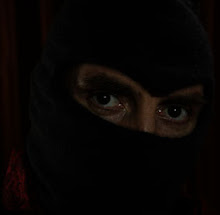

Don't snigger, I know it's been a while in coming but the time is almost here.
Milnerton Market
Die Plek van Verligting
When my work on this book was drawing to a close, I handed a dummy of it to the committee that runs Milnerton Market and invited them to flesh out the images with their own captions. The most pertinent of these illuminated a bleak and unpopulated shot of the market pitch, shrouded in mist. In heavy pencil, the caption read: Die plek van verligting. The place of relief.
Milnerton Market lies parallel to the ocean on a slim shoulder of barren land, and it could just as well be a second high-water mark. At weekends, when the place wells up again into full activity, it seems as if yet another massive wave of jumble has risen from the sea and its dark channels, rushed up over the beach, jumped the railway tracks, and emptied itself in the market grounds.
Only a close and prolonged look has made me realise that for some people the market is just this: a border zone between a place of relative comfort, on the one hand, and a place of uncertainty, on the other.
Milnerton Market occupies reclaimed land near the beaches where the first white settlers in Southern Africa set foot. For many of the stall holders and micro-entrepreneurs, the strip’s activities are themselves a work of reclamation, an attempt to reclaim economic viability and sense of self.
An orange diesel locomotive shunts derisively up and down the tracks like a blunted and misdirected messenger carrying outdated news from a past when many of the privileged white marketeers worked for parastatals like South African Railways, now called Spoornet. Such patterns of redundancy are the watermark of this book.
The order of the photographs adheres only marginally to normal time inasmuch as the first photograph I took at the market a decade ago appears at the start of the book and the last photograph at the end. They are also arranged in a vaguely chronological order to suggest some of the changes that occurred over the last decade – changes at Milnerton Market, changes in my own “documentary” sensibility – as well as to nurture the sense of contingency which makes a market circuit so rewarding.
Inside those brackets formed by the first and last photographs are one character, two old ladies, and some repeating triplets, to give rhythm and guide the reader over the market’s footprint. Essentially, the order of the photographs tries to maintain an air of outward haphazardness.
At the time of the design conception, I was bored by the trend in South African photo books in which layouts privilege photography as part of a higher order. Here, photography should be taken as everyman’s pursuit and the book design seen as analogous to the market itself rather than an ode to a medium. I also don’t believe that “social documentary” photography needs to patronise the viewer by bludgeoning a message home. This book’s various bits and pieces are meant to hint at a kernel of information whose nature can vary according to each reader’s sensibility.
My guiding principle has been to try to forge an object that would appeal to any marketgoer. Like a cursory lap of the Milnerton Market, browsing the book’s contents could seem simple.
But I hope that, through your repeated scrutiny, patterns will emerge from the mess, and that when you finally discover the slow-burning ship’s lantern protruding from a dusty tarpaulin (or the silver Eveready torch with pert red ON/OFF button for next to the door in the garage), the glow it emits will last a while.
I had fun over the years at Milnerton; the cracked conversations, fellow guttersnipes, and list-makers I encountered, not to mention the fascinating accumulations of useless junk piled everywhere, have all left me addicted.
The market is like a languid eddy which expects nothing from the focused collector or unsuspecting coaster who gets taken in its current. It has a frankness which is attractive, and I’ll continue going there as long as I can.
One weekend, after Friday night’s waves have spread a new quilt of junk over the trestle tables, you might end up finding these stained pages there too.
The contributors to this book have been extremely generous, for which I am most grateful. I would like to thank Ivan Vladislavic in particular for his patience and advice.
This book is dedicated to my parents, Mike and Sue.






















































